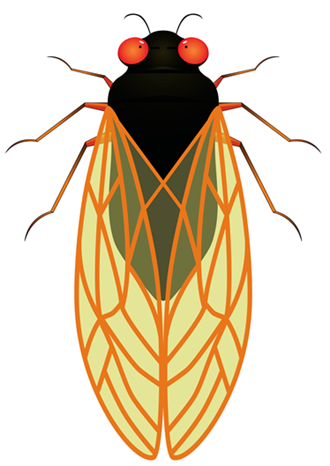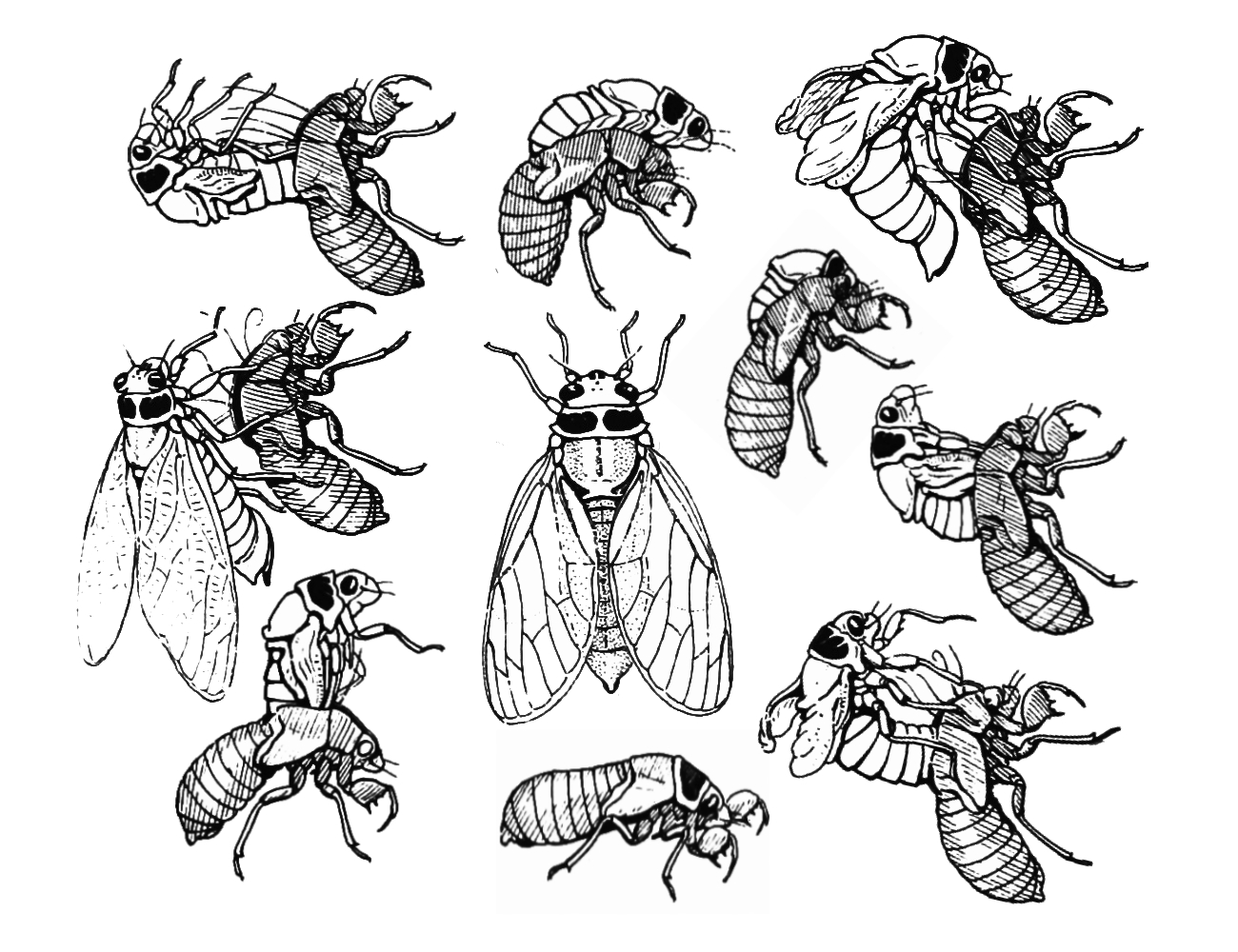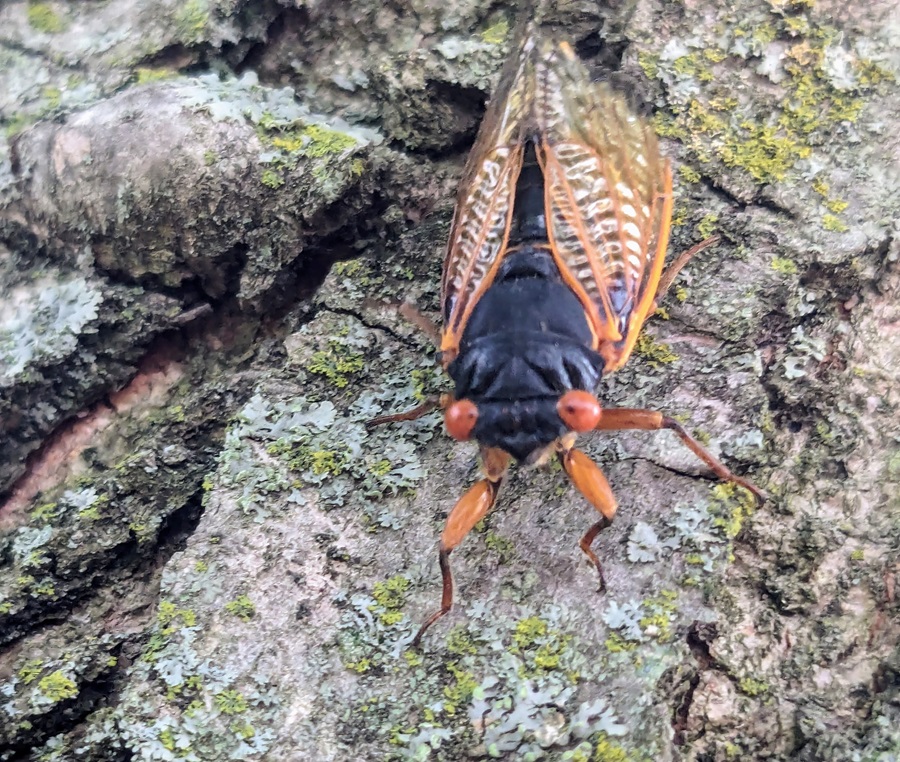 Cicada Summer Project
Cicada Summer Project
Background Information: Cicadas belong to a family of insects within the Athropod Phylum. There are over 2,500 species of cicadas worldwide. They are best known for the loud sounds they make in midsummer. The life cycle of each species vary, with the young nymphs spending a period of time burrowed underground until they emerge and transform into adults. They leave behind husks attached to trees or other surfaces. In this activity, students will research cicadas of their areas and design a mini-exhibit.
A. Search and Observations
Search the area around your house for signs of cicadas. They will appear as husks attached to trees. The insects have already flown away. The "legs" of these shells are sticky and you can attach them to your clothes or hair. Collect a few of these remains and observe them closely.
1. Are they all the same size and shape? Does this indicate that they are the same species? Or do the shells indicate that several species of cicada are in the area.
2. Can you find an adult cicada, you can recognize them by their wings. Many cicadas have a short life span and you may be able to find dead cicadas on sidewalks and in the yard. What do the adults look like? Many species are identified by the color of their eyes, what color are the eyes of your specimen. A simple pin can be used to mount an insect on styrofoam for display or photography.
B. Night Observations
Just as the sun sets, cicadas will begin to make their sounds. It is also at this time, or later in the night that you can capture cicadas as they emerge from their cocoons. Listen at night. Do you hear different sounds? Do you think there is more than one species in your area. Do the sounds change throughout the night?
C. Research & Exhibit
The species of cicada you observe will vary depending on your physical location and the specific year. You will need to identify the specific organism in your area by using the internet or library. Your photographed, described, or mounted specimen will be useful to compare to known images and rescources. Also, many species are identified by their song, several websites will play cicada sounds for you to compare to the sounds you hear at night.
Once you are certain of your species, add a card with its scientific name and a short description, similar to what you might see at a zoo exhibit.
D. Cut & Paste - Cicada Transformation
The image - Cicada Stages - shows cicadas in various stages of transformation. Cut each of the images out and organize them in their proper sequence. You may also color the cicada images. You can also create a flip book of the image which will show a mini movie of a cicada as it emerges from its coccoon.

View videos online of cicadas as they emerge from their cocoon or find a real cicada and watch it emerge, you can even create your own video. You can find many videos by a simple search on youtube. What do all the videos and images have in common? Can you describe the sequence of steps that occur as a cicada emerges from its coccon? Include your flipbook, sketches, or video in your exhibit.
E. The Final Product
You can either turn in a mounted specimen to your teacher or photograph your finished product and submit it digitally. You can also create a webpage exhibit of your cicadas online, or check with your teacher about other options. The exhibit should contain photos or a real specimen mounted on cardboard (such as a shoebox) or styrofoam, and information about the particular cicada (such as species name, life cycle, facts). Include other artifacts in your exhibit, such as the flipbook or transformation video.
Other Resources
Art Projects for Kids - How to Draw a Cicada
